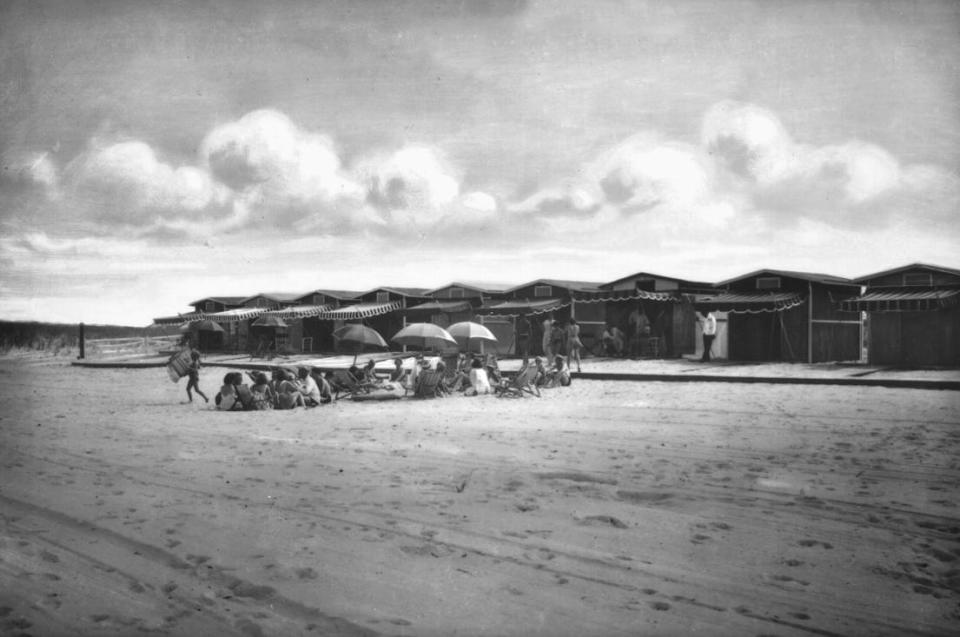How Fenwick was spared becoming vacation home for worn-out politicians
“What can John C. Sheehan, one of the Tammy leaders in New York, want with Fenwick Island?”, the Wilmington Daily Republican wondered on Dec. 19, 1896. A tract of land at the southern tip of the Delaware coast had been purchased by several Delaware politicians who had ties to their New York cohorts.
The newspaper suggested that that there might be a resurgence of the power of Tammany Hall that would create a bevy of politicians looking for a place to relax far from New York City.
According to the Daily Republican, “It is thought by some that the Tammany chieftain intends to build a clubhouse on the island and make it a gaming and fishing resort for played out Tammany politicians. They can go down there and recuperate after a heated campaign.”

Fenwick Island had long been a neglected part of the Delaware coast. Except for the lighthouse, erected in 1859, and a house for the beacon’s keeper, there were no permanent structures near the beach at Delaware’s border with Maryland.
After the Civil War, Nathaniel Bishop paddled an innovative paper canoe through the coastal bays, and he was impressed with the area’s natural beauty. Bishop’s small boat was made of laminated paper that proved to be amazingly strong enough to survive a storm on Delaware Bay.
Bishop recalled in Voyage in the Paper Canoe, “Commencing at Rehoboth Bay, a small boat may follow the interior waters to the Chesapeake Bay. The water courses of this coast are protected from the rough waves of the ocean by long, narrow, sandy islands, known as beaches, between which the tides enter. These passages from the sea to the interior waters are called inlets, and most of them are navigable for coasting vessels of light draught.”
Bishop went on to comment, “It was six miles from the mouth of Love Creek across the little sound to Burton's marshy island at the entrance of Indian River Sound ... large flocks of geese and ducks were seen upon the quiet waters of the sound.”
Eventually, Bishop approached the southern border of Delaware, “The tall tower of Fenwick's Island Light, located on the boundary line of Delaware and Maryland, was now my landmark. It rises out of the low land that forms a barrier against which the sea breaks. The people on the coast pronounce Fenwick " Phænix .” Phænix Island.”
Although sparsely settled, Bishop understood why New York politicians were attracted to Fenwick Island. He found the coastal inhabitants, “kind and hospitable to strangers. A mild climate, cheap and easily worked soils, wild fowl shooting, fine oysters and fishing privileges, offer inducements to Northerners and Europeans to settle in this country.”
According to Bishop, “After a day of hunting and fishing, the newcomer can smoke his pipe in peace, to the music of crackling flames in the wide old fireplace. Here he may be comfortable, and spend his last days quietly vegetating, with no criticisms on his deterioration, knowing that he is running to seed no faster than his neighbors.”

Developers of a proposed “Fenwick Island City” announced plans for an electric rail line that would run from the railroad station at Frankford to the coast. The new resort would be complete with a boardwalk and several large hotels.
The grandiose plans never materialized and Fenwick Island remained an isolated beach on the Delaware coast. The plans of the Tammany Hall crowd also collapsed. Fenwick Island was spared becoming a vacation home for worn-out New York politicians, and it remained undeveloped for the next 50 years.
Principal sources
Daily Republican, April 23, 1893; Dec. 19, 1896
Delaware Gazette and State Journal, May 4, 1893.
Evening Journal, April 8; April 11, 1893
Mary Pat Kyle, Fenwick Island, Delaware, A Brief History, Charleston: The History Press, 2008, pp. 49-50.
This article originally appeared on Salisbury Daily Times: How Fenwick was spared becoming vacation home for worn-out politicians

